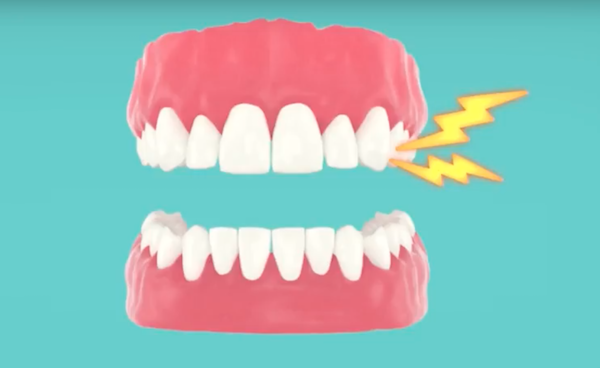
[Image above] Credit: Washington University in St. Louis, YouTube
If you’re one of those individuals (like me) who gets skittish about needles or is uncomfortable with having your finger pricked at the doctor’s office for a blood test, this practice may soon be outdated.
Researchers at the Washington University School of Medicine (St. Louis, Mo.) and the School of Engineering & Applied Science have created a novel, noninvasive way to monitor your health without using the dreaded needle or pinprick. They developed a tiny sensor and electronic chip that can be inserted into a patient’s gum or on a tooth to detect gum disease by analyzing saliva instead of blood.
The sensor contains “bio-recognition elements that measure disease-specific peptides, which are natural or synthetic groups of amino acids,” according to a Washington University news release.
“Salivary-based biosensors have generated a lot of interest because of their potential for wide applications in medicine,” assistant professor of medicine and of cell biology and physiology in the School of Medicine Erica Lynn Scheller says in the release. “We’re initially working to develop a biological sensor that measures specific peptides active in periodontal disease and that would be used in combination with a wireless device to retrieve that data.”
The sensor, only a few cubic millimeters in volume, connects to a wireless ultrasound device that reads peptide levels and records them directly to a medical data cloud. One of the challenges the researchers say they need to overcome involves refreshing the sensors for other antibodies.
“You only have a finite number of bio-recognition elements conjugated to the transducer if you are using an antibody that is specific to these peptides,” associate professor of mechanical engineering & materials science, and collaborator on the project, Srikanth Singamaneni explains in the release. “They get saturated fairly quickly. The question is how do you refresh those sensors? That’s one of the aspects we are working to address with this project.”
Although the researchers originally intended the sensor to monitor periodontal disease, they envision the sensor being employed in additional applications besides dentistry—such as monitoring diabetics, stress levels, or inflammation in patients.
“We’re developing this sensing platform that can be expanded to include additional tracking for inflammatory markers, stress markers, and diabetes monitoring,” Scheller said. “Really, anything you can think of that you’d want to track in the oral cavity, we’re developing both the platform and the specific application.”
Watch the video below to learn more about the tooth sensor.
Did you find this article interesting? Subscribe to the Ceramic Tech Today newsletter to continue to read more articles about the latest news in the ceramic and glass industry! Visit this link to get started.
